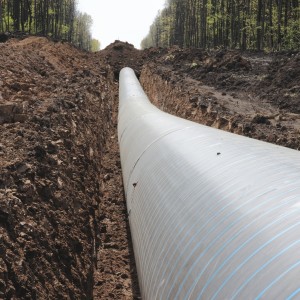Over the weekend, a small group of protesters in North Dakota marked the one year anniversary of the Sacred Stone camp. To them, the date commemorated the start of a broader movement combining Indian rights and environmental concerns. Although the camp itself was torn down this spring and oil has begun flowing through sections of the Dakota Access Pipeline, the movement has continued in states like Texas, Florida, and Pennsylvania. Despite the publicity generated by the camp, it was an unsuccessful pipeline protest and increasingly, green groups are quietly closing their state-level chapters.
Although the Standing Rock and other Native American tribes are continuing to fight DAPL in court, their challenge is unlikely to succeed. Instead, environmentalists are looking to Standing Rock as an example of a new set of protest techniques, including crowd funding campaigns, a strong social media presence, and protest camps.
“A big part of our message was not just to nationalize the fight against Dakota Access, but to highlight regional issues that people are facing,” Dallas Goldtooth, an organizer with the Indigenous Environmental Network told AP.
Protests have certainly adopted the methods of Standing Rock, but seem largely unable to stop pipeline construction. The most recent unsuccessful pipeline protest was in West Texas, the site of the Trans-Pecos Pipeline. Energy Transfer Partners, the same company that built DAPL, launched the pipeline at the end of March, when it began shipping American natural gas into Mexico.
Protesters from Standing Rock began heading to Texas this winter, with a particular push for support coming at the start of February. Despite more than thirteen “direct actions,” including locking themselves to construction equipment, the group was able to do little more than delay construction.
Now that natural gas is being shipped, the unsuccessful pipeline protest is packing up. Some protesters are planning to move to other protest sites, but others are beginning to become discouraged over their prospects of success.
“I think the movement’s dying down a lot throughout the country,” Frankie Orona, executive director of the San Antonio-based Society of Native Nations and a camp leader, told FuelFix. “I think people are discouraged.”
Now, the Trans Pecos protesters are taking to Facebook to ask for, of all things, gas money to use to get from Texas to Iowa. Some of the posts reference that the protesters wish to regroup to fight other pipelines, but generally these plans are left hypothetical and in the future.
“I have been away from my daughter and family for almost four months now,” wrote Josh Michener on Facebook. “All Im asking is for gas and food money (sic)….Then the plan is to strike back out with my daughter and continue fighting four (sic) our future. Thank you.”
Michener was not entirely clear where he was heading after with the gas and food money. Other protesters have been more clear that they intend to head home and only afterwards might return to another protest camp. Another post from Red Hawk and Christian seeks to raise $200 “to buy bus tickets and some food to get these brave Water Protectors home” to rest for a few months before they travel to Iowa to continue fighting a pipeline there.
And last week, protesters asked for “some help with gas money because they got stuck.” Linking to a Paypal account, the protesters said that they were heading for Kansas and further protest activity.
The failed Trans Pecos pipeline protest is not the only environmentalist group to shutter operations. Tom Styer’s NextGen Climate group has been quietly closing its state-level chapters. Although NextGen Climate’s homepage is still available, Facebook pages for its campaigns in Illinois, Pennsylvania, Nevada, North Carolina, Iowa, and Ohio were all closed down. Meanwhile, on the NextGen homepage, links to the state pages are dead.
NextGen is likely closing webpages as Tom Steyer considers a gubernatorial campaign in California that continues to fail to gain traction. Steyer spent some $88 million in national races in 2016, to little effect. In the state race, he continues to struggle for supporters and some believe that he may be trying to shift his image to focus more on state issues rather than national ones.
In the meantime, however, his environmental efforts are just another example of an unsuccessful pipeline protest, where environmentalists were unable to halt energy infrastructure construction despite donations and publicity.


